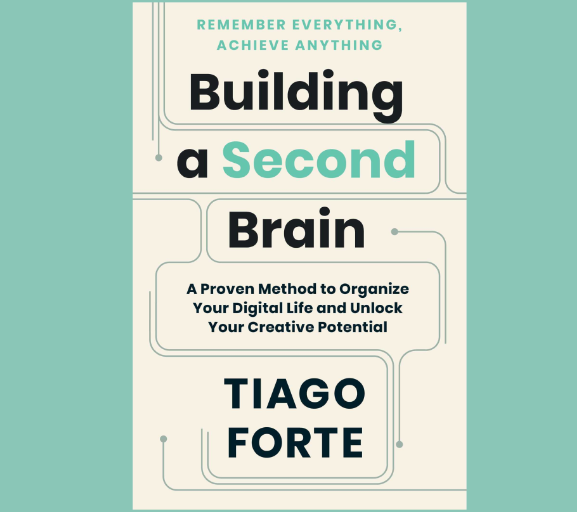"Building a Second Brain" by Tiago Forte has been a game-changer for me. The book has introduced me to an entirely new way of handling the vast amounts of information I encounter daily and has given me a fresh outlook on how to manage my thoughts, ideas, and knowledge.
Tiago's concept of a "Second Brain" is a digital commonplace where I can store, organize, and nurture my notes, insights, and creative sparks. Imagine being able to combine a study notebook, a personal journal, and a sketchbook for new ideas into one accessible and organized digital space. That's what the Second Brain is all about.
To build an effective Second Brain, Tiago presents the CODE method. CODE stands for Capture, Organize, Distill, and Express. Each step plays a crucial role in helping me create a digital space that serves as an extension of my own mind.
During the Capture phase, I've learned to collect information that resonates with me. For example, I might highlight a powerful quote from a book I'm reading, snap a photo of a beautiful painting that inspires me, or jot down an interesting idea from a podcast. As I gather this external knowledge, it sparks new internal insights, like stories, memories, and reflections.
When it comes to Organizing my Second Brain, Tiago introduces the PARA system: Projects, Areas, Resources, and Archives. These four categories have transformed how I prioritize and arrange my notes. For instance, under Projects, I might have a folder for an upcoming presentation, while Areas could include long-term responsibilities like my health or career development. This system makes my notes more accessible and actionable in the future.
The Distill phase is all about refining my notes, extracting their essence, and making them more discoverable. I practice progressive summarization, a technique where I highlight key points and continually condense them. For example, if I have a lengthy article on productivity, I'll highlight the most important sections, then summarize those highlights in a few sentences. This method makes it easy to recall and utilize my notes when needed.
Expressing my work means sharing my ideas, even if they're not perfect. Tiago encourages me to put my thoughts out there in smaller chunks, allowing me to identify what works and what doesn't earlier in the process. For example, instead of waiting until I have a complete essay, I might share a brief outline or a few bullet points on social media to gauge interest and receive feedback.
"Building a Second Brain" also underscores the importance of creative execution and essential habits of digital organizers. Tiago shares the idea of mise en place, a chef's system of keeping their workspace clean and organized, and suggests adopting similar habits for my Second Brain. By developing project checklists, scheduling weekly and monthly reviews, and cultivating noticing habits, I can create a functional and efficient digital space.
As I continue to immerse myself in the principles outlined in Tiago Forte's book, I'm thrilled to see the impact of building my Second Brain on both my personal and professional life. The CODE method, along with the tips and strategies shared in the book, has empowered me to lead a more fulfilling, organized, and creative life. And I'm confident that as I keep refining my Second Brain, I'll only continue to unlock new insights, connections, and opportunities for growth.

